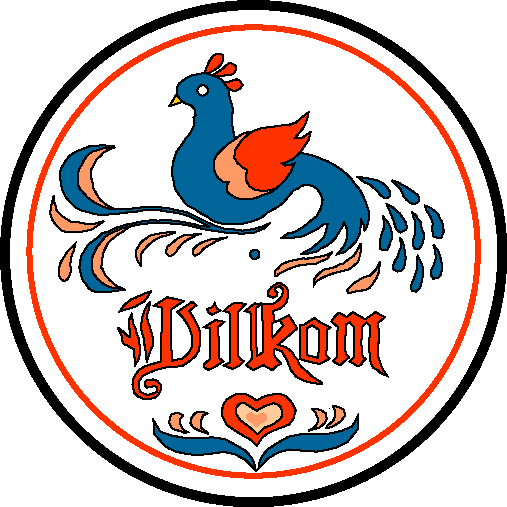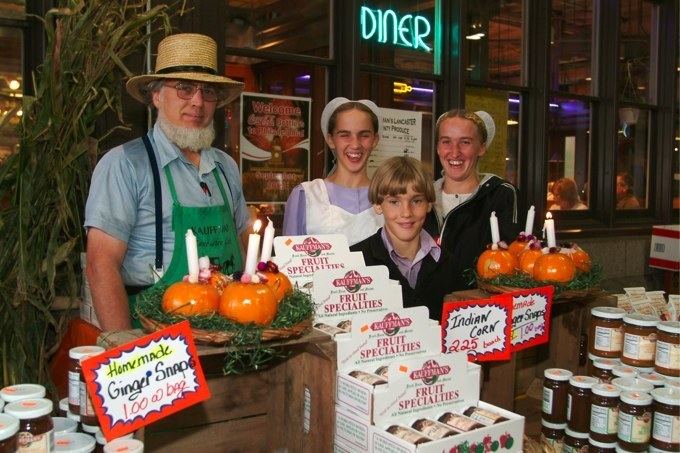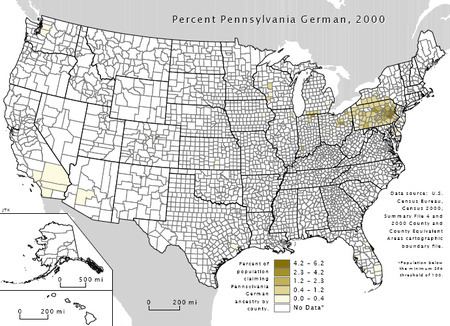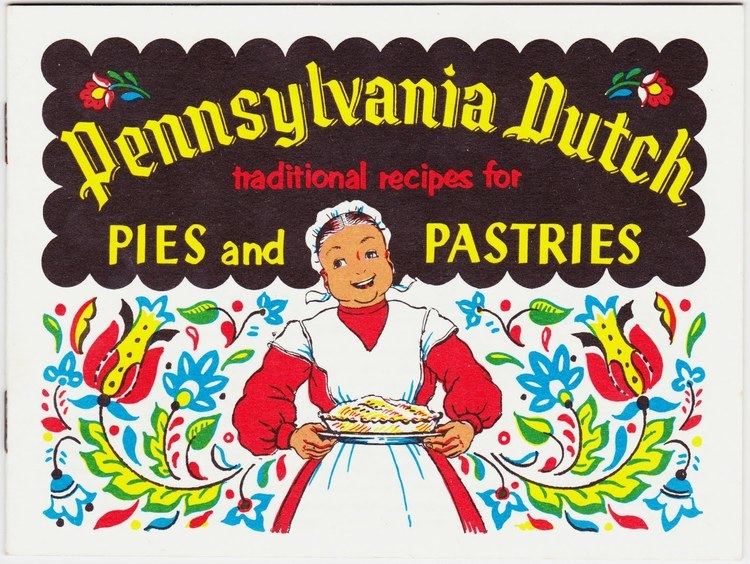 | ||
Irish people try pennsylvania dutch food
The Pennsylvania Dutch (Pennsilfaanisch Deitsch, listen ) are a cultural group formed by early German-speaking immigrants to Pennsylvania and their descendants. The word "Dutch" does not refer to the Dutch people (Nederlanders) or their descendants, but to Deitsch or Deutsch (German). The early wave of settlers, which would eventually coalesce to form the Pennsylvania Dutch, began in the late 17th century and concluded in the late 18th century. The majority of these immigrants originated in what is today southwestern Germany, i.e., Rhineland-Palatinate and Baden-Württemberg; other prominent groups were Alsatians, Dutch, French Huguenots (French Protestants), Moravians from Bohemia and Moravia, and Swiss. Historically they spoke the dialect of German known as Pennsylvania German or Pennsylvania Dutch.
Contents
- Irish people try pennsylvania dutch food
- Accent tag pennsylvania dutch english
- Etymology
- Geography
- Pennsylvania Dutch from the Palatinate of the Rhine
- Migration and settlement
- 18th century
- Migration to Canada
- Religion
- References

The first major emigration of Germans to America resulted in the founding of the Borough of Germantown, in northwest Philadelphia County, Pennsylvania, on October 6, 1683. Mass emigration of Palatines began out of Germany in the early 18th century from areas along the Rhine River.

The Pennsylvania Dutch maintained numerous religious affiliations, with the greatest number being Lutheran or Reformed, but with many Anabaptists as well. The Anabaptist religions promoted a simple lifestyle, and their adherents were known as Plain people or Plain Dutch. This was in contrast to the Fancy Dutch, who tended to assimilate more easily into the American mainstream.

Over time, the various dialects spoken by these immigrants fused into a unique dialect known as Pennsylvania German or Pennsylvania "Dutch" (Deutsch). At one time, more than one-third of Pennsylvania's population spoke this language, which also had an effect on the local dialect of English.

After the Second World War, use of Pennsylvania German died out in favor of English, except among the more insular and tradition-bound Anabaptists, such as the Old Order Amish and Old Order Mennonites. A number of German cultural practices continue to this day, and German Americans remain the largest ancestry group claimed in Pennsylvania by people in the census.
Accent tag pennsylvania dutch english
Etymology
Pennsylvania Dutch is most likely a corruption of the endonym Deitsch, which is a local variant of the modern German endonym Deutsch, meaning German. The word "Dutch" and "Deutsch" share the same origin and similar pronunciation. The pronunciation though for "Dutch" is with the "u" like in "but" and the pronunciation for "Deutsch" is with "oy" like in "boy". So in the latter it sounds like "Doych [ˈdɔʏtʃ]".
During the Middle Ages the use of "Dutch" in English referred to West Germanic speakers of continental Europe in general. From c. 1600 onward it was mainly restricted to the inhabitants of the Low Countries.
Geography
The Pennsylvania Dutch live primarily in Southeastern and South Central Pennsylvania, in the area stretching in an arc from Bethlehem and Allentown through Reading, Lebanon, and Lancaster to York and Chambersburg. They can also be found down throughout the Shenandoah Valley (the modern Interstate 81 corridor) in the adjacent states of Maryland, Virginia, West Virginia, and North Carolina, and in the large Amish and Mennonite communities in Mifflin County, Pennsylvania, in Ohio north and south of Youngstown, and in Elkhart (especially the towns of Middlebury and Nappanee) and LaGrange Counties (especially Shipshewana, which has a large Amish-based tourism industry) in Indiana.
After the American Revolution, John Graves Simcoe, Lieutenant Governor of Upper Canada, invited pacifists from the former American Colonies, including Mennonites and German Baptist Brethren, to settle in British North American territory on the promise of exemption from military service and the swearing of judicial oaths. This has resulted in small communities of Pennsylvania Dutch speakers' emigrating to Canada. Today, the language is mostly spoken in the Waterloo Region.
Pennsylvania Dutch from the Palatinate of the Rhine
Many Pennsylvania Dutch are descendants of refugees from the Palatinate of the German Rhine. For example, some Amish and Mennonites came to the Palatinate and surrounding areas from the German-speaking part of Switzerland, where, as Anabaptists, they were persecuted, and so their stay in the Palatinate was of limited duration. The majority of the Pennsylvania Dutch have roots going much further back in the Palatinate. During the War of the Grand Alliance (1689–97), French troops pillaged the Palatinate, forcing many Germans to flee. The War of the Palatinate (as it was called in Germany), also called the War of the League of Augsburg, began in 1688 as Louis XIV took claim of the Electorate of the Palatinate. French forces devastated all major cities of the region, including Cologne. By 1697 the war came to a close with the Treaty of Ryswick, now Rijswijk in the Netherlands, and the Palatinate remained free of French control. However, by 1702, the War of Spanish Succession began, lasting until 1713. French expansionism forced many Palatines to flee as refugees.
Migration and settlement
The first major emigration of Germans to America resulted in the founding of the Borough of Germantown in northwest Philadelphia County, Pennsylvania, on October 6, 1683, by a group of settlers organized by Francis Daniel Pastorius, an agent for a land purchasing company based in Frankfurt am Main, Germany, and was composed largely of Quakers and Mennonites from the Rhineland.
Mass emigration of Palatines began out of Germany in the early 18th century. In the spring of 1709, Queen Anne granted refuge to about 7,000 Palatines who had sailed the Rhine to Rotterdam. From there, about 3,000 were sent to America either directly or through England, bound for William Penn's colony. The remaining refugees were sent to Ireland to strengthen the Protestant presence in that country.
By 1710, large groups of Palatines had sailed from London, the last group of which was bound for New York. There were 3,200 Palatines on 12 ships that sailed for New York and approximately 470 died en route to America. In New York, under the new Governor, Robert Hunter, Palatines lived in camps along the Hudson River and worked for British authorities to produce tar and pitch for the Royal Navy in return for their safe passage. In 1723 one hundred heads of families were granted land in the Mohawk Valley west of what is now Little Falls, in what was called the Burnetsfield Patent, where they served as a buffer on the frontier separating the French and Native Americans from the English colonies. Most were farmers.
In 1723, some 33 Palatine families, dissatisfied under Governor Hunter's rule, migrated from Schoharie, New York, along the Susquehanna River to Tulpehocken, Berks County, Pennsylvania, where other Palatines had settled. They became farmers and used intensive German farming techniques that proved highly productive.
18th century
The Pennsylvania Dutch composed nearly half the population of Pennsylvania and generally supported the Patriot cause in the American Revolution. Henry Miller, an immigrant from Germany of Swiss ancestry, published an early German translation of the Declaration of Independence (1776) in his newspaper Philadelphische Staatsbote. Miller often wrote about Swiss history and myth, such as the William Tell legend, to provide a context for patriot support in the conflict with Britain.
Frederick Muhlenberg (1750–1801), a Lutheran pastor, became a major patriot and politician, rising to be elected as Speaker of the U.S. House of Representatives.
Migration to Canada
From 1800 to the 1830s, some Pennsylvania Dutch settlers in Upstate New York and Pennsylvania moved north to Canada. They settled in two main areas in Ontario:
Reesor, Ontario (Reesor Siding) was a short-lived Mennonite settlement in the Cochrane District of Northeastern Ontario, from the 1920s to 1940s; most settlers to that region eventually settled back to Southern Ontario.
Religion
The Pennsylvania Dutch are people of various religious affiliations, most of them Lutheran or Reformed, but many Anabaptists as well. Henry Muhlenberg (1711–1787) founded the Lutheran Church in America. He organized the Ministerium of Pennsylvania in 1748, set out the standard organizational format for new churches and helped shape Lutheran liturgy.
Muhlenberg was sent by the Lutheran bishops in Germany, and he always insisted on strict conformity to Lutheran dogma. Muhlenberg's view of church unity was in direct opposition to Nicolaus Ludwig Zinzendorf's Moravian approach, with its goal of uniting various Pennsylvania German religious groups under a less rigid "Congregation of God in the Spirit." The differences between the two approaches led to permanent impasse between Lutherans and Moravians, especially after a December 1742 meeting in Philadelphia. The Moravians settled Bethlehem and nearby areas and established schools for Native Americans.
